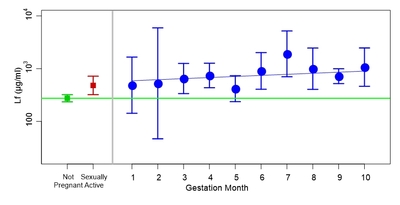Roberts, S A, Brabin, L, Diallo, S, Gies, S, Nelson, A, Stewart, C, Swinkels, D W, Geurts-Moespot, A J, Kazienga, A, Ouedraogo, S, D'Alessandro, U, Tinto, H and Brabin, Bernard (2019) 'Mucosal lactoferrin response to genital tract infections is associated with iron and nutritional biomarkers in young Burkinabé women.'. European Journal of Clinical Nutrition, Vol 73, pp. 1464-1472.
|
Text
s41430-019-0444-7.pdf - Published Version Available under License Creative Commons Attribution. Download (1MB) | Preview |
|
|
Text
MANUSCRIPT.docx - Accepted Version Download (79kB) |
||
|
Text
Supplementary file 2.pdf - Supplemental Material Download (104kB) | Preview |
|
|
Text
Lf Supplementary file 1.docx - Supplemental Material Download (336kB) |
||
|
Slideshow
FIG.1.pptx Download (38kB) |
||
![[img]](https://archive.lstmed.ac.uk/11012/10.hassmallThumbnailVersion/FIG.2.jpg)
|
Image
FIG.2.jpg Download (73kB) | Preview |
|
|
Image
FIG.3.tiff Download (2MB) | Preview |
|
|
Image
FIG.4.tif Download (780kB) | Preview |
Abstract
BACKGROUND/OBJECTIVES
The iron-binding affinity of vaginal lactoferrin (Lf) reduces iron available to genital pathogens. We describe host reproductive, nutritional, infection and iron biomarker profiles affecting vaginal Lf concentration in young nulliparous and primigravid women in Burkina Faso.
SUBJECTS/METHODS
Vaginal eluates from women who had participated in a randomized, controlled periconceptional iron supplementation trial were used to measure Lf using a competitive double-sandwich ELISA. For this analysis samples from both trial arms were combined and pregnant and non-pregnant cohorts compared. Following randomization Lf was measured after 18 months (end assessment) for women remaining non-pregnant, and at two antenatal visits for those becoming pregnant. Associations between log Lf levels and demographic, anthropometric, infection and iron biomarker variables were assessed using linear mixed models.
RESULTS
Lf samples were available for 712 non-pregnant women at end assessment and for 303 women seen at an antenatal visit. Lf concentrations of pregnant women were comparable to those of non-pregnant, sexually active women. Lf concentration increased with mid-upper-arm circumference, (P = 0.047), body mass index (P = 0.018), Trichomonas vaginalis (P < 0.001) infection, bacterial vaginosis (P < 0.001), serum C-reactive protein (P = 0.048) and microbiota community state types III/IV. Adjusted Lf concentration was positively associated with serum hepcidin (P = 0.047), serum ferritin (P = 0.018) and total body iron stores (P = 0.042). There was evidence that some women maintained persistently high or low Lf concentrations from before, and through, pregnancy.
CONCLUSION
Lf concentrations increased with genital infection, higher BMI, MUAC, body iron stores and hepcidin, suggesting nutritional and iron status influence homeostatic mechanisms controlling vaginal Lf responses.
| Item Type: | Article |
|---|---|
| Subjects: | WA Public Health > Health Problems of Special Population Groups > WA 395 Health in developing countries WC Communicable Diseases > Tropical and Parasitic Diseases > WC 880 Filariasis and related conditions (General) WH Hemic and Lymphatic Systems > Hematologic Diseases. Immunologic Factors. Blood Banks > WH 400 Fluid elements. Plasma. Serum. Blood proteins. Blood protein disorders WJ Urogenital System > WJ 100 General works WP Gynecology > Anatomy. Diseases. Injuries > WP 140 Diseases (General) |
| Faculty: Department: | Education |
| Digital Object Identifer (DOI): | https://doi.org/10.1038/s41430-019-0444-7 |
| Depositing User: | Stacy Murtagh |
| Date Deposited: | 10 Jun 2019 11:41 |
| Last Modified: | 20 Nov 2019 15:27 |
| URI: | https://archive.lstmed.ac.uk/id/eprint/11012 |
Statistics
Actions (login required)
 |
Edit Item |

 Tools
Tools Tools
Tools
